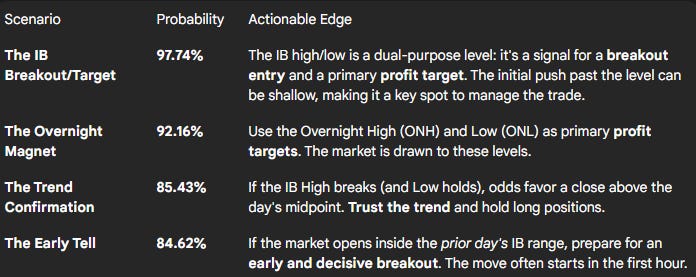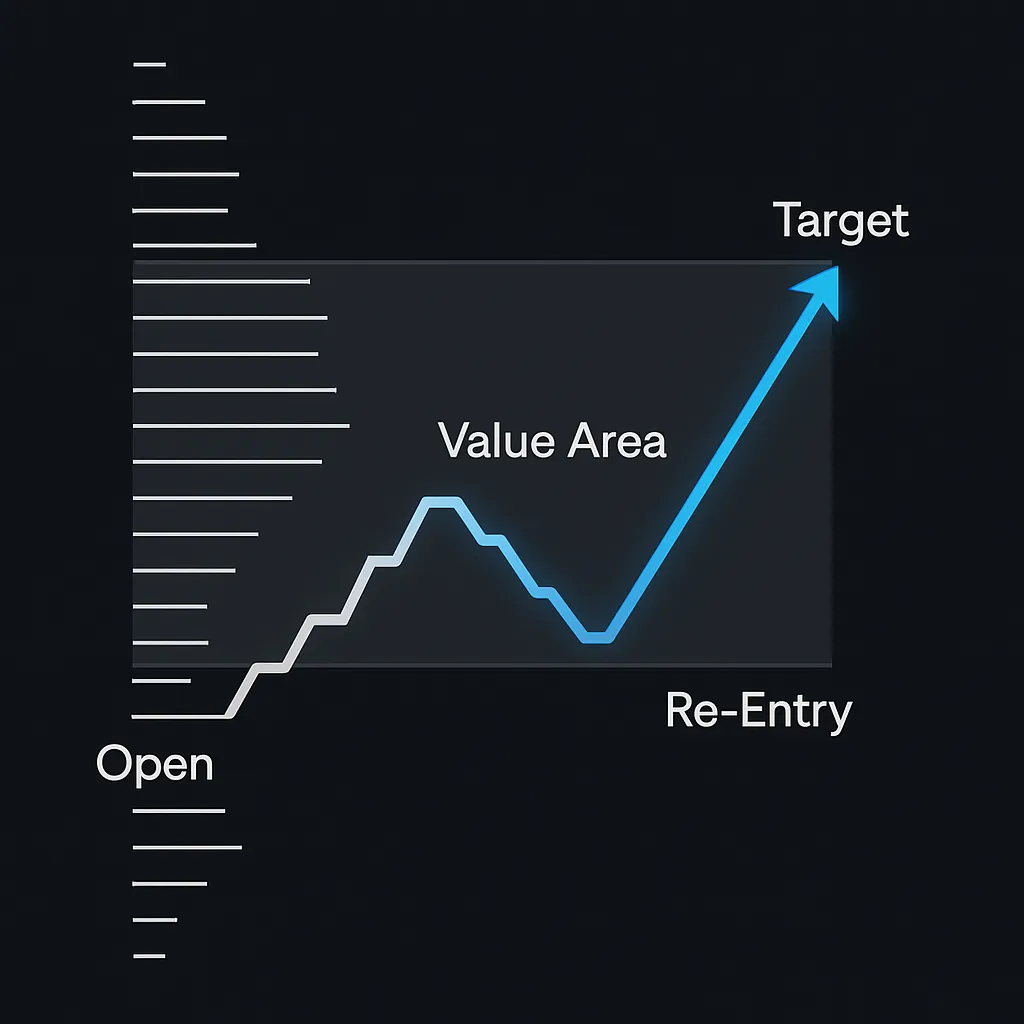Have you ever had that feeling that the market just has a certain… mood? Some months feel like a relentless grind, while others seem to offer up opportunities on a silver platter. You’re not imagining it. This is market seasonality at play—a hidden rhythm that, once understood, can provide a powerful tailwind for your trading.
As traders, we build our strategies on structure, trend, and confluence. Seasonality is one of the most overlooked yet potent layers of that confluence. It’s the big-picture context; the prevailing current that can either help push your trades toward their targets or create a frustrating headwind you have to fight against.
Think of it like this: if your trading plan is your vehicle, seasonality is the weather report. You wouldn’t set off on a long road trip without checking the forecast, right? So let’s dive deep into the S&P 500’s historical patterns and learn how to use this “trader’s almanac” to our advantage.
More Than Just an Old Adage: Why This Matters
Before we break down the calendar, let’s be clear: seasonality is not a crystal ball. It’s a study of historical tendencies and probabilities, not a guarantee of future performance. You would never take a trade based only on the fact that it’s October.
However, when you combine these historical patterns with your core trading strategy—your technical analysis, your understanding of market structure, and your risk management rules—it becomes an incredibly valuable tool. It helps answer questions like:
Should I be more aggressive with my profit targets this month?
Should I consider reducing my trade size during this period?
Is the current market weakness typical for this time of year, or is it a sign of something more serious?
Understanding these patterns gives you a strategic edge and helps you stay psychologically prepared for what the market might throw at you.
The Big Picture: A Market of Two Halves
Before we even look at individual months or quarters, the most powerful seasonal trend is the division of the year into two distinct six-month periods.
The “Best Six Months” (November – April): This is historically the most bullish period for the S&P 500. It kicks off with the strong year-end rally and carries that momentum through the first quarter. This is the market’s prime time, fueled by holiday optimism, fresh institutional allocations, and positive sentiment. During this phase, the market has a statistical tailwind.
The “Worst Six Months” (May – October): This period is home to the famous adage, “Sell in May and Go Away.” While the market doesn’t necessarily fall for six straight months, historical returns during this half of the year are significantly weaker than in the first half. It’s a period often defined by summer slowdowns, lower liquidity, and the dreaded September slump. Here, we face a statistical headwind.
Just knowing which half of the year you’re in provides a massive top-down bias for your trading plan.
A Quarter-by-Quarter Deep Dive
Now, let’s zoom in and see how these broader patterns play out on a quarterly basis.
Q1 (January – March): The Optimism Quarter 🚀
The year typically starts strong. Q1 is often driven by a sense of renewal, with institutional investors putting new capital to work.
- What to Expect: The quarter often starts with the January Effect, where optimism can fuel buying pressure. While February can sometimes be a bit choppy or see a minor pullback, March often finishes the quarter on a high note. Overall, Q1 is a period of net strength.
- Sectors to Watch: Technology and Financials often perform well as investors place their bets for the year ahead.
Q2 (April – June): The Transition Quarter
Q2 is a tale of two halves. It starts with a bang but often ends with a whimper as the market transitions into its weaker seasonal period.
- What to Expect: April is historically one of the strongest months of the year, often benefiting from positive sentiment carrying over from Q1. But then comes May, and the “Sell in May and Go Away” phenomenon begins to take hold. Market performance tends to become more subdued or choppy as we head into the summer.
- Sectors to Watch: As the quarter progresses, you might see a rotation from growth-oriented sectors toward more defensive ones, like Utilities and Consumer Staples.
Q3 (July – September): The Summer Doldrums & September Slump 📉
Welcome to what is historically the weakest and trickiest quarter of the year. If there’s a time to be defensive and patient, this is it.
- What to Expect: The quarter often begins with the “summer doldrums.” Trading volume thins out from late June through August, leading to choppy, sideways price action that can frustrate trend-followers. Then comes September, which holds the crown as the single worst-performing month for the S&P 500 historically. This is the peak of the statistical headwind.
Q4 (October – December): The Power Quarter 💪
After navigating the treacherous waters of Q3, traders are often rewarded with the strongest quarter of the year.
- What to Expect: October has a reputation for being volatile and has hosted some infamous crashes, but it’s also known as a “bear killer” month where major bottoms are often formed. This sets the stage for November and December—two of the most consistently bullish months, supercharged by holiday cheer and institutional window dressing.
A Closer Look: The Personality of Each Month
While thinking in quarters is great for a high-level view, zooming in on the individual months reveals even more of the market’s unique character.
January: Generally positive, riding the wave of New Year optimism.
February: Often a cool-down month, where the market digests earlier gains. Can be choppy.
March: Tends to be a solid month, finishing the first quarter with strength.
April: A Standout Star ⭐. Historically one of the best months for the market. It’s the heart of the Q2 strength and a time to look for bullish opportunities.
May: The “Sell in May” period begins. Returns often become much more muted as the market enters its weaker half.
June: A mixed month that can see some chop as the summer doldrums begin to set in.
July: Often a bright spot in the summer, sometimes producing a decent rally before the late-summer weakness.
August: Performance is often sluggish with low volume as many traders are on vacation.
September: The Red Month 🚩. This is the one to circle on your calendar. Historically, September is the single worst-performing month for the S&P 500. It’s a time for maximum caution and defensive posturing.
October: The Volatile Turnaround Artist 🎢. Famous for its volatility and historical crashes, October is also known as a “bear killer.” It’s often the month where the market finds its footing after the Q3 weakness and begins its powerful year-end ascent.
November & December: The Power Duo 🏆. These two months are the engine of the Q4 rally. November is historically very strong, and December follows it up with the famous “Santa Claus Rally” into the year’s end. This is the market’s prime season for bullish momentum.
Putting It All Together: A Practical Framework
Now that we’ve seen the market’s rhythm from the annual, quarterly, and monthly perspectives, how do we actually use this in our day-to-day trading?
Start with the Top-Down Context: First, identify where you are in the six-month cycle. Are you in the bullish (Nov-Apr) or bearish (May-Oct) half of the year? This sets your primary bias.
Layer on Your Core Strategy: Seasonality is a background element, not the main event. Your primary focus should always be on market structure, trend, and price action on your key timeframes (Weekly, Daily, 4-Hour). A seasonal tailwind is useless if you’re buying directly into major resistance.
Use It as a Confluence Factor: When a high-quality technical setup (like a bounce from a key support zone) aligns with a strong seasonal period (like November), that’s an A+ setup. Conversely, if you see a potential long setup in mid-September, the seasonal headwind should make you demand even more confirmation before taking the trade.
Manage Risk Accordingly: Use seasonality to inform your risk parameters. In a strong seasonal period like Q4, you might feel more comfortable scaling into a winning trade. In a weak period like Q3, you might trade smaller sizes and be quicker to take profits.
By viewing the market through this seasonal lens, you add a layer of depth to your analysis, helping you to stay patient when you need to be and act decisively when the probabilities are stacked in your favor.



